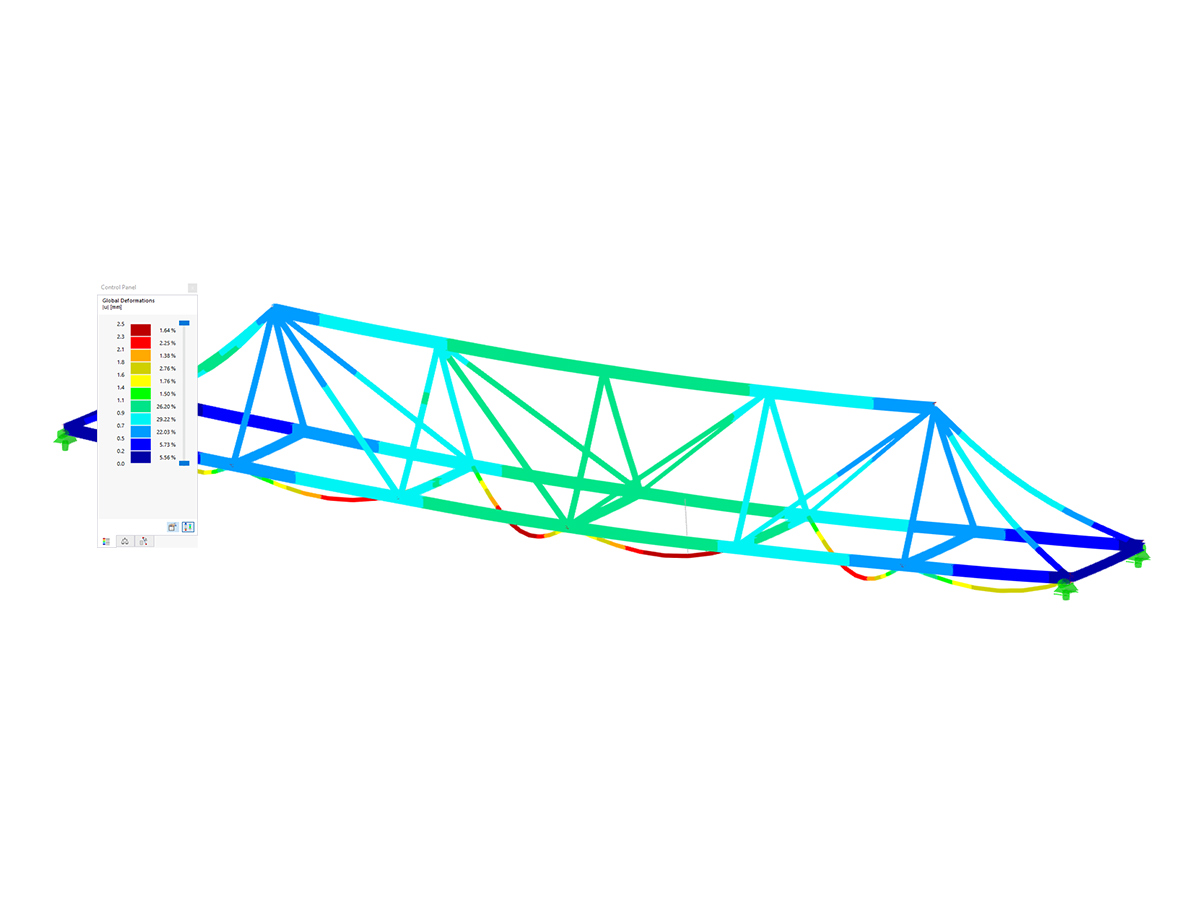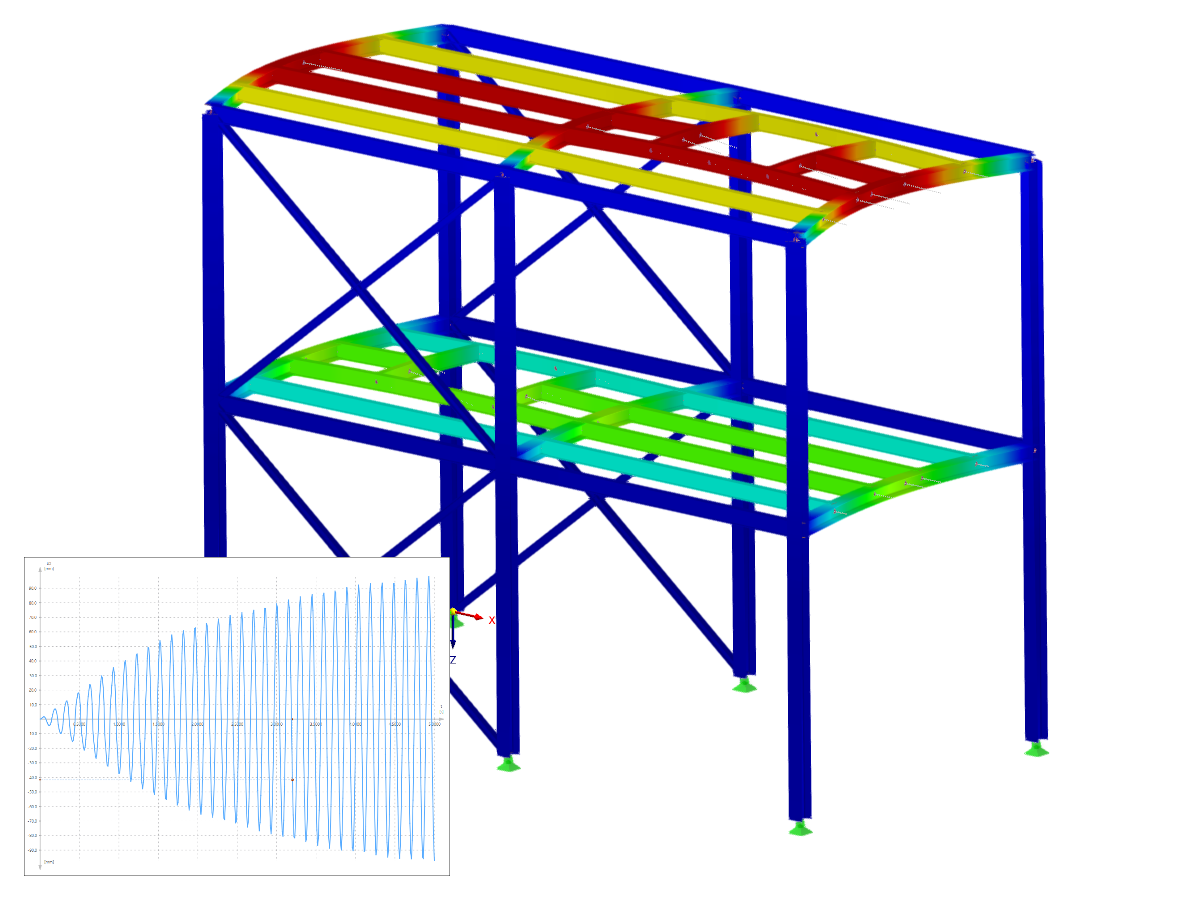Structure Stability
The Structure Stability add-on for RSTAB 9 allows you to perform efficient stability analyses. Use this powerful tool to determine critical load factors and the corresponding stability modes without performing complex manual calculations. You can calculate models consisting of member elements, perform nonlinear stability analyses, and consider initial prestresses.
Response Spectrum Analysis
The Response Spectrum Analysis add-on performs seismic analysis using the multi-modal response spectrum analysis. The spectra required for this can be created in compliance with the standards or can be user-defined. The equivalent static forces are generated from them. The add-on includes an extensive library of accelerograms from seismic zones that can be used to generate response spectra.
Pushover Analysis
Earthquakes may have a significant impact on the deformation behavior of buildings. A pushover analysis allows you to analyze the deformation behavior of buildings and compare them with seismic actions. Using the Pushover Analysis add-on, you can analyze the seismic actions on a particular building, and thus assess whether the building can withstand the earthquake.
Time History Analysis
The Time History Analysis add-on performs dynamic structural analysis of external excitation. You can define various excitation functions in tables or as a function of time. The time history analysis is performed using the modal analysis or the linear implicit Newmark analysis.
Model Optimization Using Artificial Intelligence (AI)
The two-part Optimization & Costs / CO2 Emission Estimation add-on finds suitable parameters for parameterized models and blocks via the artificial intelligence (AI) technique of particle swarm optimization (PSO) for compliance with common optimization criteria. Furthermore, this add-on estimates the model costs or CO2 emissions by specifying unit costs or emissions per material definition for the structural model.














